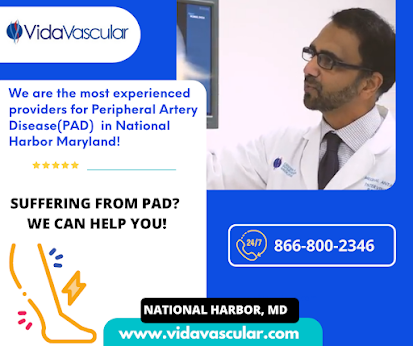SUFFERING FROM PAD? WE CAN HELP YOU! We are the most experienced providers for PAD in National Harbor, Maryland!
.png)
If you have leg pain while walking a short distance, it may be a sign of a condition called peripheral artery disease(PAD), and should get screened. Peripheral arterial disease (PAD) develops only in the arteries, which carry oxygen-rich blood away from the heart. We often think of clogged artery disease as something that only happens in the heart. Yet for some people, the leg pain caused by PAD acts as an “early warning” that someone is at high risk for a heart attack or a stroke. Peripheral artery disease symptoms may include– Coldness in the lower leg or foot, especially when compared with the other side Leg weakness No pulse or a weak pulse in the legs or feet Painful cramping Skin color changes on the leg Studies have also suggested that early vascular care intervention increases life expectancy in PAD patients. Peripheral artery disease (PAD) happens when the arteries in your legs become narrow, usually because of atherosclerosis, or the buildup of plaque on your artery walls....
.png)
.png)
.png)
